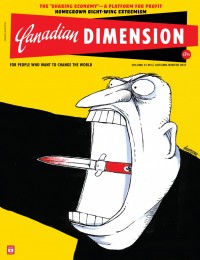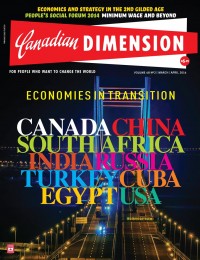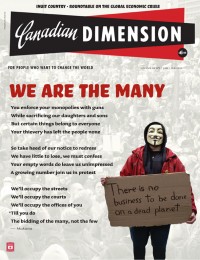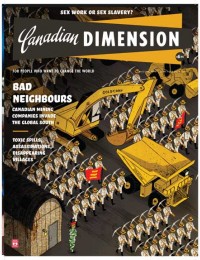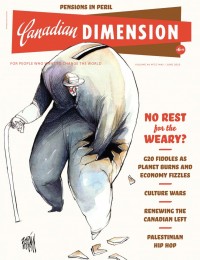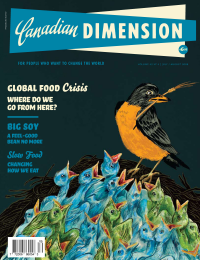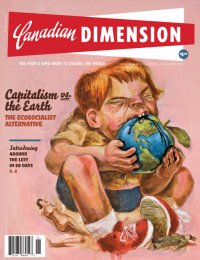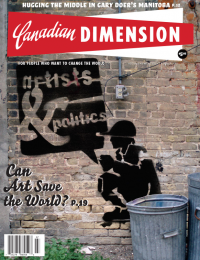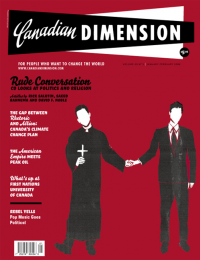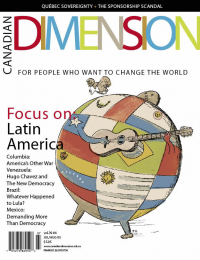Jean Chrétien’s austerity made Canada less prepared for COVID-19

Former Prime Minister Jean Chrétien speaks at an event in 2013. Photo from Wikimedia Commons.
The history of the Liberal government of Jean Chrétien and his finance minister Paul Martin is often framed as one of rescuing the Canadian economy from a growing government debt load. It consciously forgets the reduction in unemployment insurance, the elimination of rail subsidies, and the cuts to the CBC. The deficit has remained a political and media obsession ever since Chrétien’s time in power, but that focus ignores the social costs of his and Martin’s agenda and how cutting federal spending created an escalating crisis on the provincial and municipal levels—not to mention fuelling growing levels of household debt.
The COVID-19 pandemic has forced Canadians to reckon with the growing social problems in our society, which are, in part, the product of an underfunded welfare state. From the lack of hospital beds and public housing units to the lack of access to unemployment insurance and other social supports, these problems are not new; they have simply been easy to ignore while the going was good for many Canadians. These programs were not adequate even before the Chrétien years and cuts had already begun under Brian Mulroney’s Progressive Conservatives, but the Chrétien-Martin austerity budgets of the mid-1990s were a significant turning point for the Canadian welfare state.
Cutting health spending
The Conservatives might try to claim the mantle of small government, but it was under Chrétien that, according to William Watson, federal spending was cut, “not just in real terms, after inflation is accounted for, which is rare enough, but also in nominal terms, something that had not been seen since before the Second World War.” That was achieved through significant rollbacks in social spending by the federal government, particularly through the unilateral reorganization of health and social transfers to provinces, which administer much of the Canadian welfare state.
Before Chrétien, the federal government would share the cost of social assistance programs administered by provincial governments, along with providing funding for provincial health care systems. However, the Liberals replaced that with a series of block grants called the Canada Health and Social Transfer. In the words of Michael J. Prince, a contributor to The Chrétien Legacy, this “delivered … sudden and deep absolute cuts in transfer payments to the provinces,” where “1993 levels of federal spending on health care were achieved again only in 2004, following Chrétien’s retirement.” In the same book, historian Gerard W. Boychuk explains that this change in how the federal government funded social programs meant that the “shortfall in cash transfers … by the time Chrétien left office was over $26 billion in 2003 dollars.” That’s money that was taken out of provincial budgets for health care and social spending to reduce the federal deficit—and it’s had real consequences for Canadians.
As the threat of COVID-19 became apparent, governments realized a shortage of hospital beds and ventilators could mean the difference between life or death for people infected with the virus. Since the Chrétien years, however, both the total number of hospital beds and the number of acute beds per 1,000 inhabitants has steadily fallen. It has reached the point that Canada ranks near the bottom of OECD hospital-bed rankings. Boychuk writes the cuts to health spending created “the illusion of health care as a rapidly growing fiscal burden relative to the ability of governments, as a whole, to bear this burden.”
In her book Better Now: Six Big Ideas to Improve Health Care for All Canadians, Dr. Danielle Martin echoes this concern. She describes how media discourse on health spending frequently revolves around how health spending has ballooned as a percentage of provincial budgets over the past few decades, but ignores the real reasons for that increase. According to Martin, “As governments across the country cut taxes over the last two decades, the size of the communal pie—the total budget for public services—began to shrink.” With less revenue from federal transfers and provincial taxes, the share going to health seemed to rise rapidly, but that was only because cutting health care was politically unpopular, so provincial governments slashed education budgets, increased post-secondary tuition fees, and cut other social programs instead. One of the most significant cuts came in the form of the federal withdrawal from funding for public housing.
A retreat from social housing
Through the 1960s and 1970s, the federal government expanded the Canadian welfare state, including providing support to provincial governments for public, cooperative, and non-profit housing. However, in the 1980s Mulroney scrapped the support for cooperative housing, and Chrétien followed by withdrawing the federal government from social housing entirely in 1993, making it the responsibility of provincial and municipal governments. But given the additional financial pressures placed on the provinces by the federal government, many responded by cutting their own support for social housing, including in Ontario and Alberta.

In The Chrétien Legacy, University of Ottawa professor Caroline Andrew writes that the cuts to social programs by the Chrétien government, “particularly the elimination of social housing as a federal activity, has been one factor in the increased polarization within Canadian cities and the deterioration of conditions for vulnerable and marginalized groups.” For a long time, the increase in homelessness has been accepted, but as the pandemic hit Canada, it became clear to many more Canadians that having so many people living on the streets is a collective failure.
Across the country, governments have been housing more of the homeless people in their cities—but that only became a problem because they were neglected for so long. The federal government introduced the Canada Emergency Response Benefit (CERB), in part because the limits placed on Employment Insurance since the Chrétien years have made it too difficult to access for many Canadians (and low payouts would be unlikely to cover their bills). But even the CERB required Canadians to have had previous income and a job, locking out those experiencing long-term unemployment.
The need for a federal vision
Nearly three decades after Chrétien and Martin gutted federal support for the Canadian welfare state, the pandemic has made it clearer than ever that was a mistake. A federal role in health and social programs is necessary not only to make sure they are adequately funded, but also to be certain that the quality of programs and services is maintained across the country. And while provincial and especially municipal governments face ever more revenue constraints, the federal government does not have the same limitations, as its response to the crisis has shown.
Instead of continuing to abandon the welfare state and the vulnerable Canadians who most rely on it, this must be a moment for the federal government to step back up the plate and reassert itself. To build a more equitable society, the federal government should finally expand public health coverage to include pharmacare, something Chrétien promised to do all the way back in 1997, along with dental, vision, long-term care, and other health care services. With the pressures placed on provinces, much of the funding for that expansion should come from the federal government.
It is also clear that the social safety net has become frayed since the Chrétien cuts. The Canada Child Benefit has been a positive addition, but more needs to be done to expand support for low-income and marginalized Canadians. Justin Trudeau’s Liberals announced a National Housing Strategy, but it doesn’t go nearly far enough. The funds for that program should instead be channeled to fund a massive public-housing program that addresses the long waitlists at provincial housing authorities.
Finally, municipal governments are under particular strain, forced to take on additional responsibilities due to federal and provincial underinvestment. The federal government fast-tracked $2.2 billion for municipalities, but far more is needed to keep essential services working and to mitigate the worst of the pandemic’s economic fallout. As more people move into cities in the coming years, better mass transit systems will be vital, which is why the government should not only fund the capital costs for transit projects, but provide an ongoing subsidy to cover operating costs.
Make no mistake: provinces and municipalities are an important part of Canada’s governance framework, but the federal government always plays a guiding role. In recent years, federal leadership has been lacking, leaving Canada rudderless and uncertain of its future. The post-pandemic world will require a federal government that once again provides a vision for the future of the country and uses its fiscal power to see it through.
Chrétien and Martin entrenched the neoliberal model, but the problems it created have finally come to a head. In the United States and the United Kingdom, austerity and the fraying of the welfare state exacerbated existing tensions to such a degree that both countries are tearing themselves apart in a misguided nostalgia for their glory days. With rising Western alienation and troubling polling on sentiments toward refugees, this is the moment for the federal government to reassert itself with a reinvestment in the welfare state and a recovery plan that benefits the working class to head off similar trajectory in Canada.
Paris Marx is a writer and graduate student at McGill University. They are the host of Tech Won’t Save Us, editor of Radical Urbanist, and have also written for NBC News, CBC News, Jacobin, and Tribune. Follow Paris on Twitter at @parismarx.
















